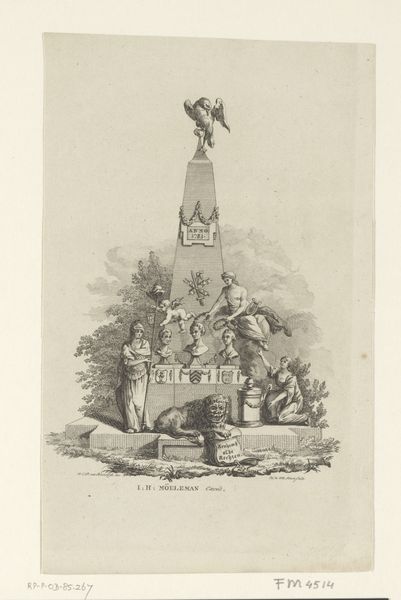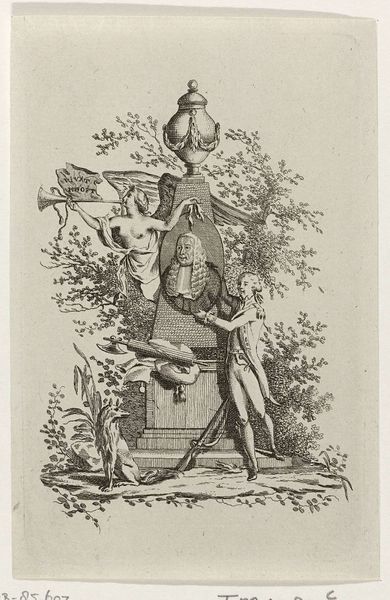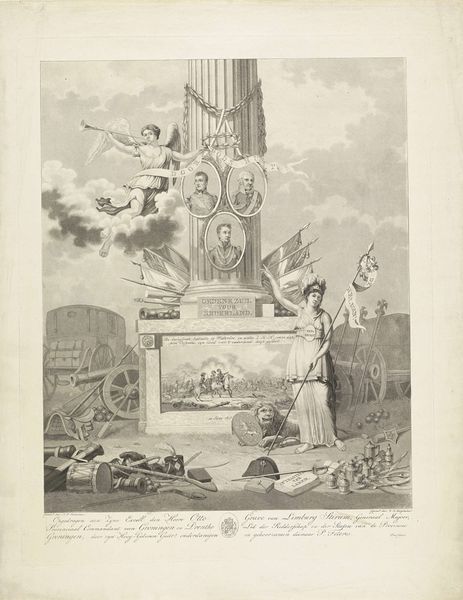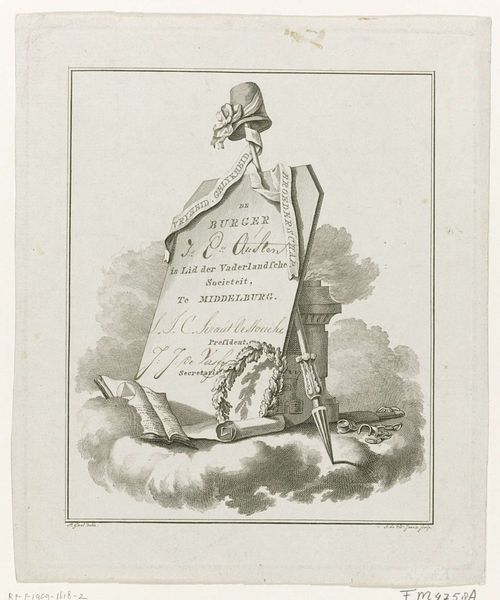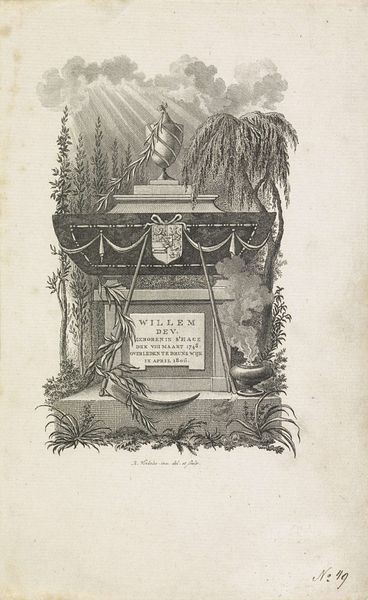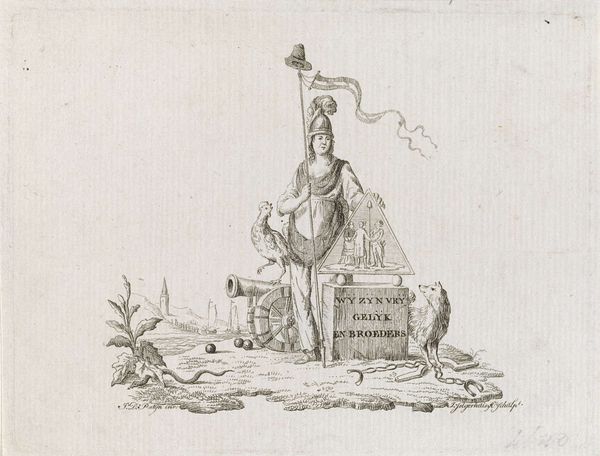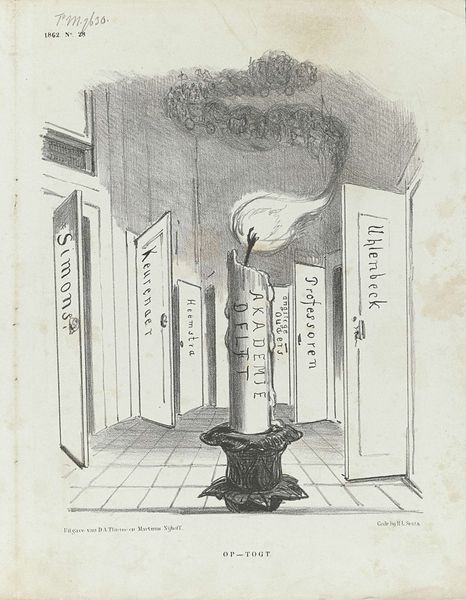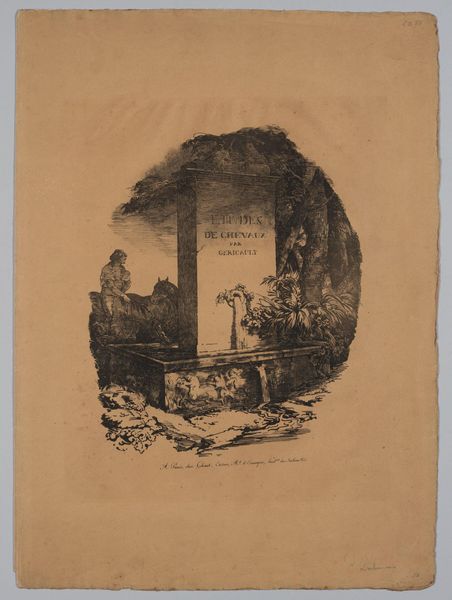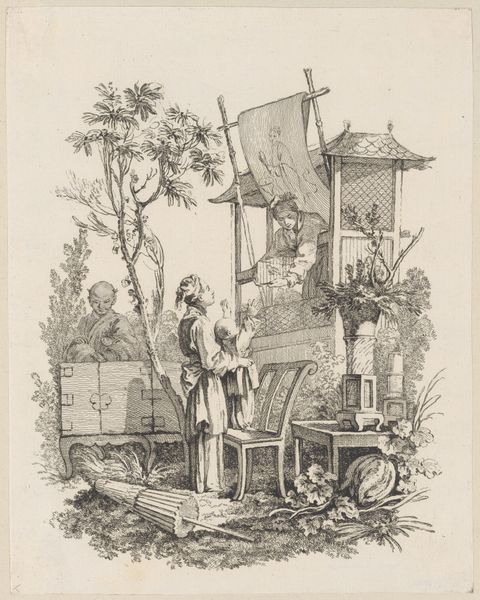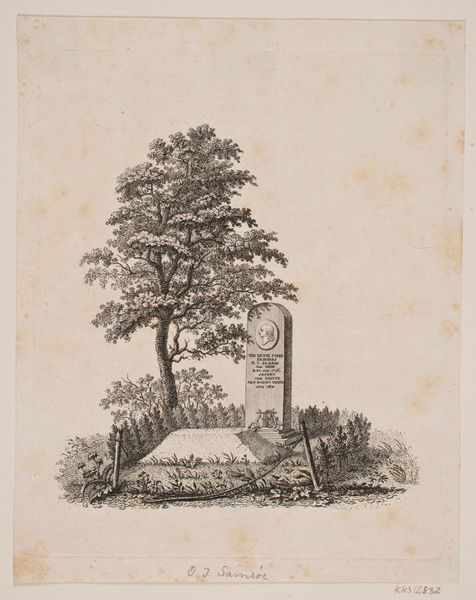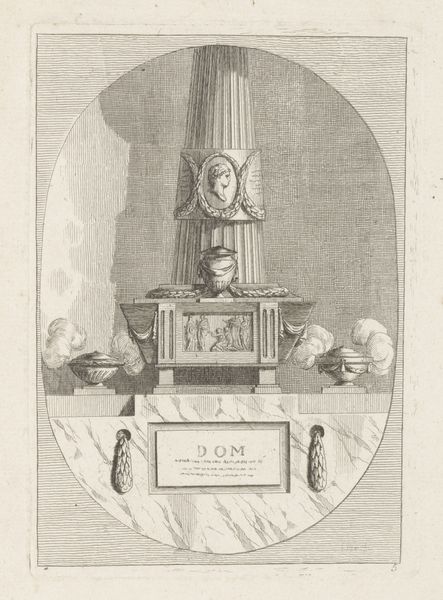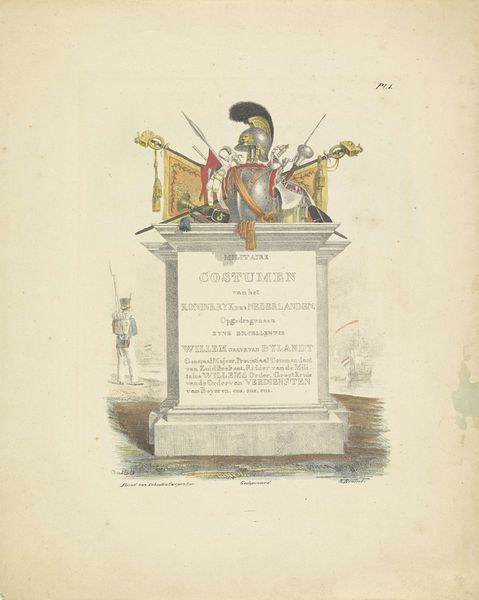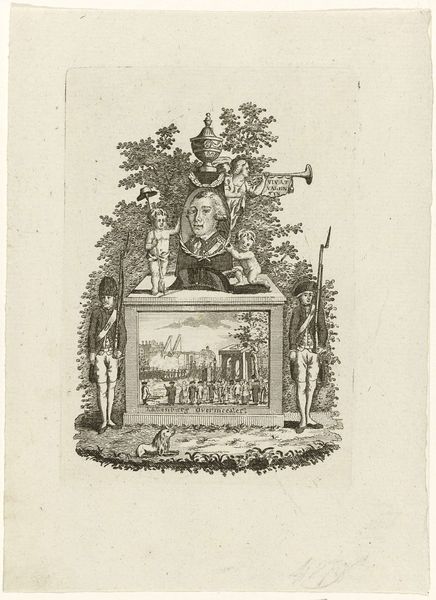
drawing, print, paper, ink, engraving
#
drawing
#
neoclacissism
#
allegory
# print
#
landscape
#
paper
#
ink
#
history-painting
#
engraving
Dimensions: height 239 mm, width 167 mm
Copyright: Rijks Museum: Open Domain
Curator: This ink and paper drawing is entitled "Gedenkteken voor Rutger Schutte," or "Memorial for Rutger Schutte," and was created between 1784 and 1786 by Hendrik Leffert Meyling. The piece presents an elaborate, neoclassical memorial set within a landscape. What strikes you most immediately about this image? Editor: Well, there’s definitely a vibe happening here. That skull and crossbones up top is screaming "memento mori," but there's also something unsettlingly neat and tidy about the whole arrangement. Even the rubble looks carefully placed. Does the tidiness undermine the sincerity of the sentiment? Curator: The skull is, indeed, a classic symbol, evoking transience. It’s part of a whole symbolic vocabulary being employed here. Note also the allegorical figures flanking the monument itself. These figures represent virtue and melancholic mourning, respectively. The scattered books, instruments, and other symbolic detritus indicate earthly pursuits rendered obsolete by mortality. The artist is pulling from the familiar visual language of grief and remembrance, making a pointed commentary about life, death, and legacy. Editor: I see what you mean about that language, but that monument itself feels so...calculated. All those right angles and symmetrical details are visually fighting with the overt display of grief. I wonder if it’s a statement on the period itself, on a desire to contain powerful feelings within a framework of reason? The overall structure reminds me a little of stage design with the carefully placed props in front. Curator: It’s true that Neoclassicism, as an artistic movement, prized order, reason, and symmetry. This aesthetic reflects a broader cultural desire for stability and clarity. So, that tension between overt emotional symbols and rigid presentation might just highlight how powerful those ideals were at the time, containing the expression within established decorum. And regarding your stage design thought: keep in mind history painting and allegory were important themes in neoclassical art and are rooted in theater and literature traditions. Editor: So, is this orderly arrangement about controlling grief or framing it in a way that society found palatable? Almost like saying, "Yes, we mourn, but we do so with dignity and within certain aesthetic parameters?" Curator: I think it's both. There's an acknowledgement of loss, yes, but presented through the lens of contemporary ideals. Editor: It’s like the monument is performing grief, rather than simply feeling it. A fascinating snapshot of a very self-aware era, carefully controlling the narrative of its emotions even in remembrance. Curator: Precisely. By looking closely at these choices, we gain insight into not just the individual being mourned but also the cultural values of those doing the mourning. Editor: Well, that was a lot darker and deeper than I anticipated, but very interesting. I’m feeling more melancholy myself, though still not neatly organized.
Comments
No comments
Be the first to comment and join the conversation on the ultimate creative platform.
